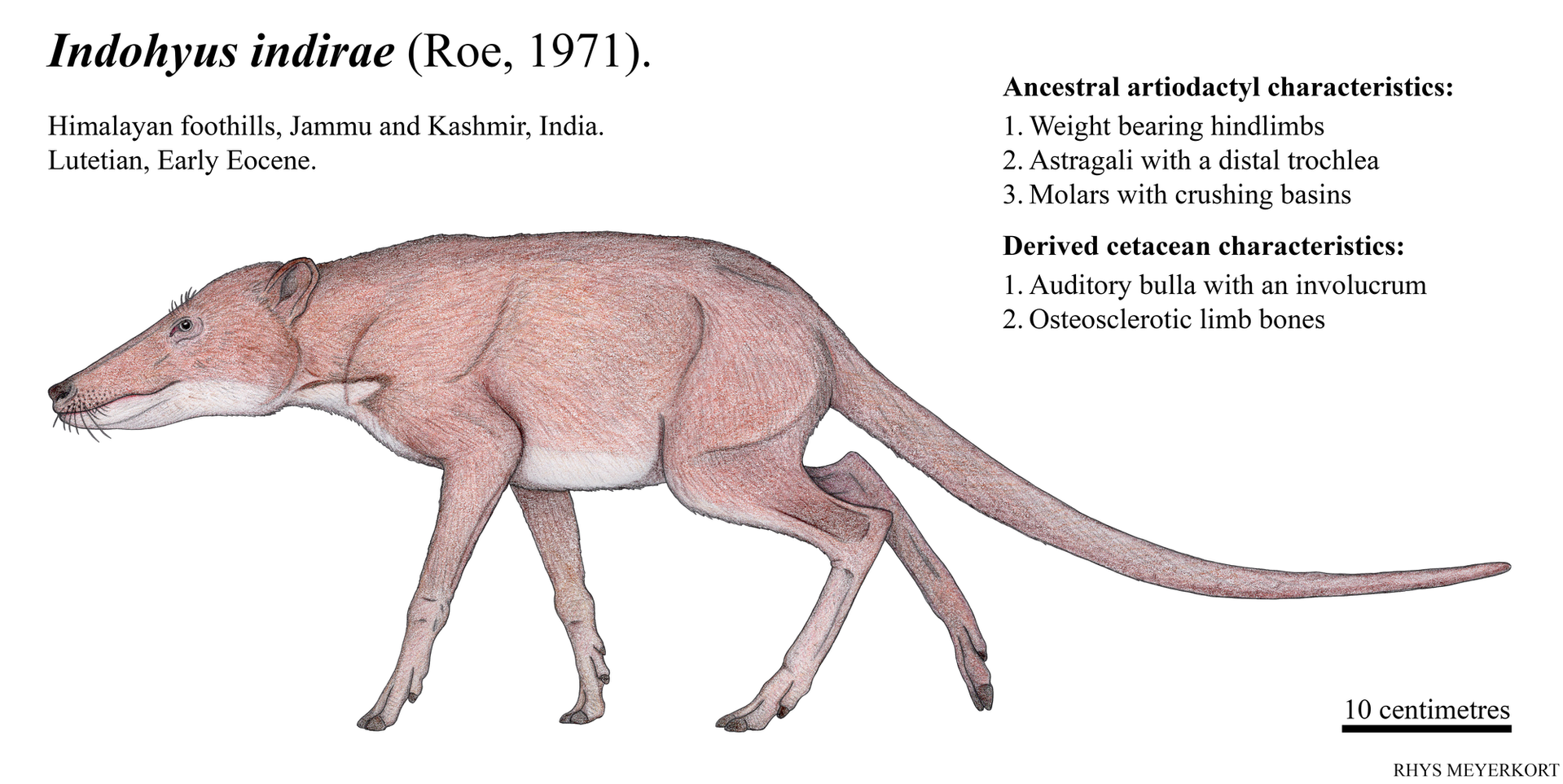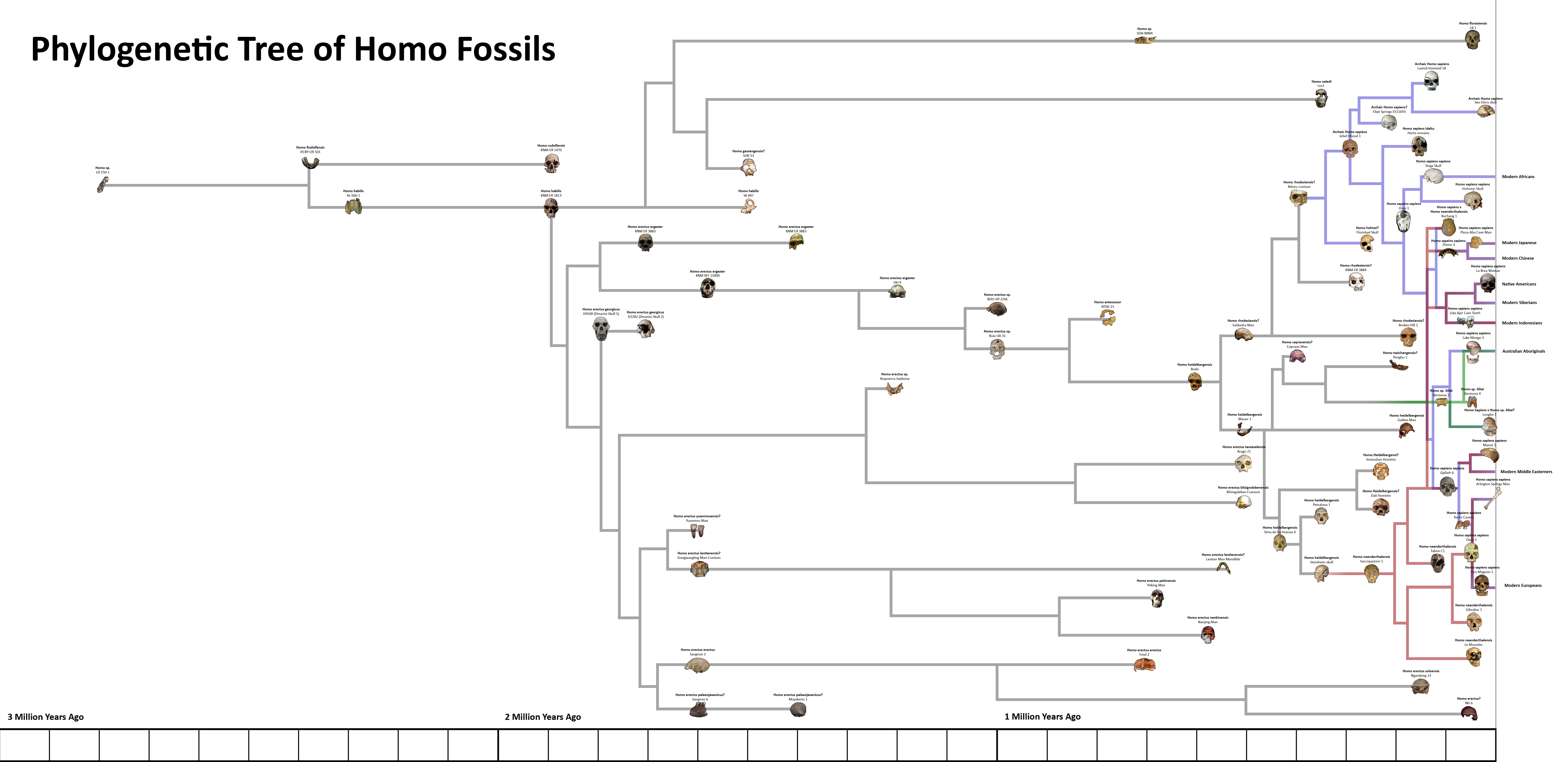HOME | DD
 Paleonerd01 — Indohyus: A semiaquatic cetacean relative
Paleonerd01 — Indohyus: A semiaquatic cetacean relative

#cetacea #artiodactyla #indohyus #raoellidae #cetaceamorpha #indohyusindirae #evolution #palaeontology #paleoart #paleontology
Published: 2022-03-11 07:13:51 +0000 UTC; Views: 14491; Favourites: 163; Downloads: 12
Redirect to original
Description
Indohyus was a small digitigrade ungulate that lived in what is now the Himalayan foothills in western India during the Lutetian stage of the early Eocene, approximately 47 million years ago (Roe, 1971) (Bajpai et al,. 2009). Indohyus was a member of the family Raoellidae, the sister clade to cetaceans (Thewissen et al., 2007). Indohyus possessed a talus (astragalus) with a second trochlea, a diagnostic characteristic of artiodactyls (even-toed ungulates). This unique feature allows for greater mobility of the ankle joint in the anteroposterior direction (Thewissen et al., 2009).
Significantly, Indohyus also possessed a thickened medial lip of the tympanic (auditory) bulla called the involucrum (Thewissen et al., 2007). Previously this derived characteristic was thought to be uniquely diagnostic of cetaceans as it is possessed by no other mammal group. Indohyus was therefore closely related to cetaceans and represents their closest non-cetacean artiodactyl relative. Indohyus and the Raoellidae family are classified separate to cetaceans because they lack other derived cetacean characteristics.
These characterises include double-rooted third upper premolars, a lack of the protocone on the fourth upper premolar, and reduced metacones and absent hypocones on the first and second upper molars (Thewissen et al., 2007). In all fossil and extant cetaceans, the crushing basins of the molars are reduced. The trigonid and talonid basins are absent in the lower molars and the trigon basin is very small or absent in the upper molars. But the crushing basins are large in the molars of Raoellids and other basal ungulates (Thewissen et al., 2007). This difference in dentition implies a major shift in diet, the earliest cetaceans likely feeding on fish.
The limb bones of Indohyus were osteosclerotic, the cortical bone layer was much thicker, and the medullary cavity decreased. Osteosclerosis is an adaptation that provides ballast in semiaquatic bottom walkers such as Hippopotamus and assists in maintaining neutral buoyancy in slow swimmers such as manatees. The ratio of stable oxygen isotopes in the tooth enamel of Indohyus confirms it spent a significant amount of time in freshwater. This evidence strongly indicates Indohyus lived a semiaquatic lifestyle, similar to a Hippopotamus (Thewissen et al., 2007).
Thewissen et al. proposed that Indohyus behaved similarly to the African mouse deer (Hyemoschus aquaticus), which feed on land plants and flee into the water to avoid predators. Indohyus was more aquatically specialised than the African mouse deer and so likely spent more time in water, either for feeding or protection.
References:
Bajpai, S., Thewissen, J. G. M., Sahni, A. (2009). “The origin and early evolution of whales: macroevolution documented on the Indian Subcontinent.” Journal of Biosciences, 34(5): 673-686.
Roe, A. R. (1971). “New mammals from Murree (Kalakot Zone) of the Himalayan foothills near Kalakot, Jammu and Kashmir state, India.” Journal of the Geological Society of India, 12(2): 124-134.
Thewissen, J. G. M., Cooper, L. N., Clementz, M. T., Bajpai, S., Tiwari, B. N. (2007). “Whales originated from aquatic artiodactyls in the Eocene epoch of India.” Nature, 450(7173): 1190-1194.
Thewissen, J. G. M., Cooper, L. N., George, J. C., Bajpai, S. (2009). “From Land to Water: the Origin of Whales, Dolphins, and Porpoises.” Evolution Education & Outreach, 2(2): 272-288.
Related content
Comments: 7

👍: 0 ⏩: 0

👍: 0 ⏩: 0

👍: 0 ⏩: 0

👍: 0 ⏩: 1

👍: 0 ⏩: 1

👍: 0 ⏩: 1

👍: 0 ⏩: 0

























